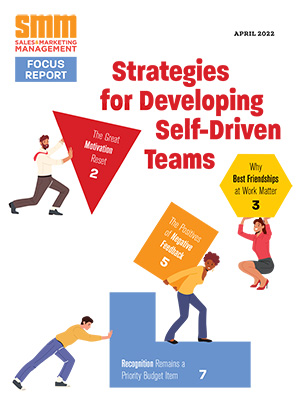It’s always smart to take a crash course now and then from author/marketer/entrepreneur Seth Godin. Here’s a collection of wisdom from his blog, which can be found at SethGodin.typepad.com.
Selling like Steve
Have you thought about the fact that just about every time Steve Jobs appeared in public, he was selling us something? And yet few rolled their eyes and said, “Oh, here comes another sales pitch.”
Jobs sold us expensive, high-margin hardware that we knew would eventually became obsolete, and yet people lined up to hear the pitch. How come? I think it’s because he was saying, “Here, I made this. It might be worth talking about.”
Inherent in this statement is the flip side: “It might not work.” And in almost every case, he was right — that it might be worth talking about, and that it might not work. Sometimes he was early, but he was usually interesting. That’s a slot that’s available to more people than ever before, regardless of industry or audience.
Average stuff for average people is getting ever more difficult to sell. If that’s all you’ve got, get something else.
The two-review technique
As you work on your project (your presentation, your plan, your speech, your recipe, your…), imagine that it’s the sort of thing that could be reviewed on Amazon. Now, write (actually write down) two different reviews:
• A five-star review by someone who gets it, who is moved, who is eager to applaud your guts and vision
• And then, a one-star review, an angry screed, not from the usual flyby troll, but from someone who actually experienced your work and hated it
You’ve got two reviews, here’s the question: Are you working to make it more likely that the five-star reviews are more intense, more numerous and more truthful than ever, or are you working to minimize the number of one-star reviews?
Very hard to obsess about both since they tend to happen together. The thing is, if you work to minimize criticism, you have surrendered the beauty and greatness of what you’ve set out to build.
For less than it’s worth
The only things we spend time and money on are things that we believe are worth more than they cost. The key words of this obvious sentence are often miscalculated: Believe, worth and cost.
Believe as in the story we tell ourselves. Believe as in the eye of the beholder. Believe as in emotion.
Worth as in what we’ll trade. Worth as in our perception of its worth right now, not later. Worth as in how we remember this decision tomorrow or next year.
And cost, as in our expectation of how much it will hurt to get it, not merely the price tag. If people aren’t buying your product, it’s not because the price is too high. It’s because we don’t believe you enough, don’t love it enough, don’t care enough.
Promotion, demotion and opportunity
You can learn a new skill, today, for free.
You can take on a new task at work, right now, without asking anyone.
You can make a connection, find a flaw, contribute an insight, now.
Or not.
In a fluid system, when people are moving forward, others are falling behind.
The question, then, isn’t, “when am I going to get promoted?”
No, I think the question is, “will I grab these openings to become someone who’s already doing work at a higher level?”
Act “as if.” If the people around you don’t figure out what an asset you’ve become, someone else will.
A fly on the wall
It’s easier than ever to listen in, to hear what your customers say about you, to read what your friends are posting, to eavesdrop. Keep surveying your employees, tap their phone lines, hang out in a stall in the break room…
If you try hard enough, you can hear what people are saying about you behind your back.
The thing about the fly on the wall, though, is at the end of the day, he spends a lot of time eating dung.
What people say isn’t always what they mean. It’s more productive to watch what they do.



